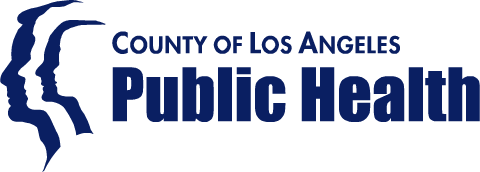Acute Communicable Disease Control Manual (B-73)
Conjunctivitis
Revised: June 10, 2024
Overview
AGENT
Conjunctivitis (Pink Eye) can be caused by viruses, bacteria, allergens, or irritants.
- Viral: Most commonly caused by viruses such as adenovirus.
- Bacterial: Caused by bacteria like Staphylococcus aureus, Streptococcus pneumoniae, and Haemophilus influenzae.
- Allergic (non-infectious): Triggered by allergens such as pollen, dust mites, mold, pet dander, medicines, and cosmetics.
- Irritant (non-infectious): Caused by foreign bodies like smoke, fumes, dust, chemicals (e.g., contact lens solution, chlorine in pools).
- Other: Fungi, parasites.
IDENTIFICATION
Symptoms: Common symptoms include pink or red eyes, swelling, increased tear production, itching, irritation, burning, discharge, and crusting of eyelids or lashes.
- Viral: Often occurs with a cold or flu, starts in one eye and may spread, watery discharge.
- Bacterial: Thick discharge and pus, may cause eyelids to stick together, can occur with an ear infection.
- Allergic: Affects both eyes, itching, swelling, and other allergy symptoms like sneezing.
- Irritant: Watery eyes, mucous discharge, linked to irritant exposure.
- Fungal: Rare but serious, often linked to contaminated objects or injuries.
Incubation
Varies with agent. Bacterial infections generally have longer incubation than viral. Allergens and irritants can cause symptoms immediately or take days.
Reservoir
Reservoir varies and based on causative agent.
Transmission
Depends on the causative agent:
- Respiratory and lacrimal secretions (saliva, sputum, nasal mucus, tears), feces.
- Close personal contact with infected individuals.
- Touching contaminated surfaces and then touching eyes, nose, or mouth.
Communicability
Most contagious when symptomatic, especially while case is shedding virus or bacteria via respiratory or ocular route, blister fluid, and feces. Infectious period varies on virus or bacteria. Allergic and irritant conjunctivitis are not considered infectious. Virus and bacteria may persist in feces for days or weeks after symptoms resolve. Antibiotics can prolong bacterial shedding.
Persons working with young children should pay special attention to environmental hygiene.
Specific Treatment
Typically, conjunctivitis is mild and self resolves. Severe cases (affecting vision) should be referred to a medical provider. Symptomatic treatment varies on causative agent and may include warm compresses over affected eye(s); removal of irritant; and allergy medications. Antibiotics are not routinely recommended as they do not often alter the course of conjunctivitis. Children should not receive aspirin or medication with salicylate.
Reporting Procedures
Outbreak Definition
Individual cases are not reportable. Outbreaks must be reported per California Code of Regulations, Section 2500.
Outbreaks include 10 or more epi-linked confirmed or suspected cases occurring within a 7-day period.
For reporting or outbreak guidance in schools, see our School Toolkit.
Report Form
Control of Case, Contacts & Carriers
Outbreak Investigation: Must be conducted within 24 hours.
Surveillance should continue until 7 days with no new cases.
Precautions:
- Respiratory and enteric precautions.
- Limit exposure in group settings.
Cases
Symptomatic cases should not attend group activities. Children with conjunctivitis should be kept home from daycare or school until 24 hours after symptoms resolve (residual redness of eye with no discharge is acceptable).
Contacts
Search for other cases among individuals at the same setting. Increase personal hygiene.
Prevention & Education
- Implement hygienic measures applicable to diseases transmitted via respiratory, fecal-oral, or contaminated fomites route.
- Extra attention should be given to handwashing and personal hygiene, especially during diaper changing.
- Shared toys can be vehicles for transmission. Wash or discard articles (toys) soiled with respiratory or ocular secretions, or feces.
- Disinfect surfaces that may be contaminated with virus, bacteria, or irritants.
- Prevent exposure of infants and young children to individuals with acute illness.
- Assess for environmental hazards (chemicals, fumes, dust, and other irritants). Remove immediately.
- Site visit to observe conditions and cleaning procedures can be particularly helpful, especially in large or ongoing outbreaks.
For more information, see our Schools Toolkit and the CDC Conjunctivitis website.
Diagnostic Procedures
Laboratory diagnosis of conjunctivitis is not routinely required or sought. Clinical and epidemiological history will determine tests to be performed. After consultation with AMD, please contact ACDC if unusual circumstances exist, such as more severe clinical complications or hospitalizations.
 Translate
Translate
